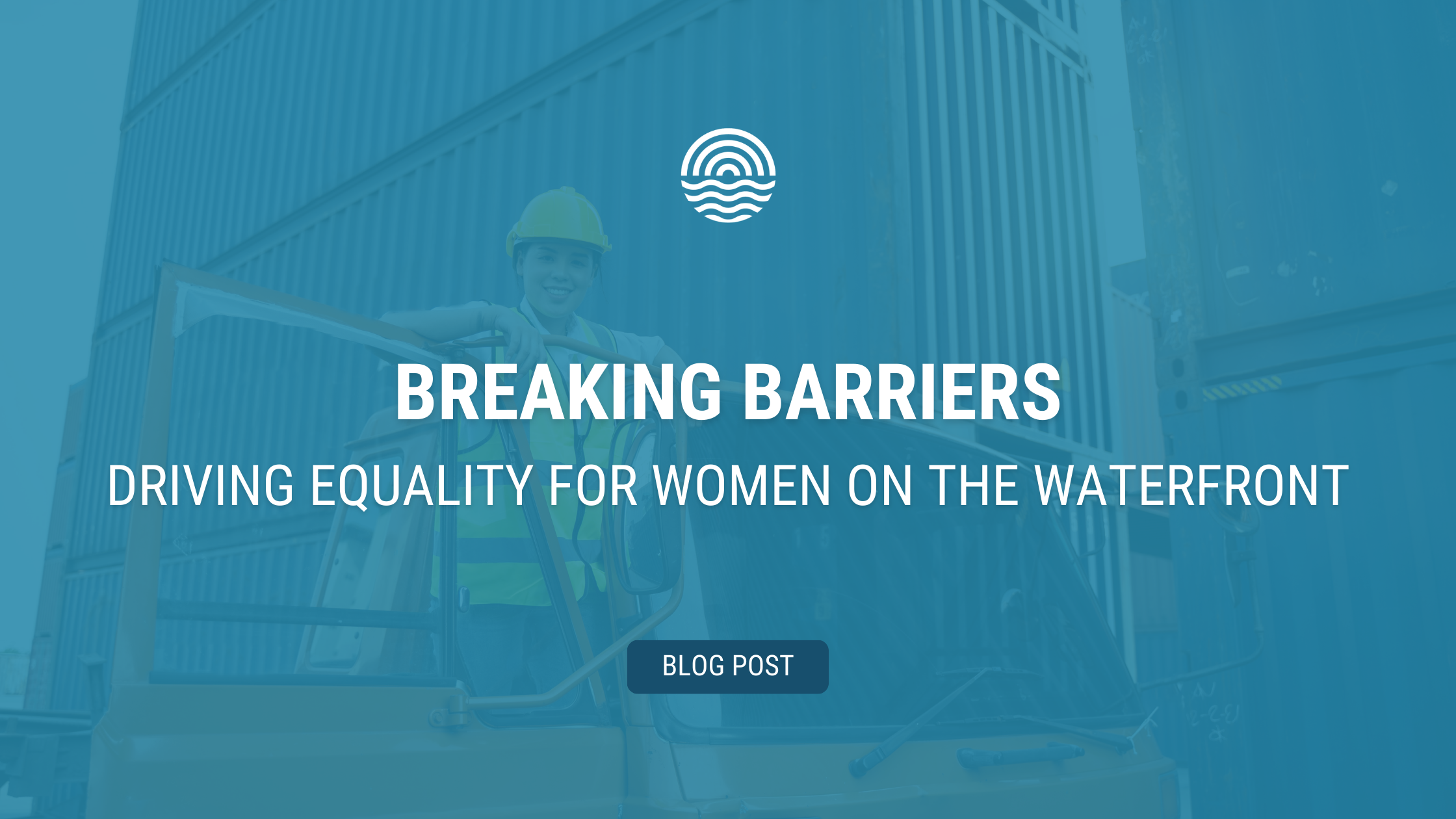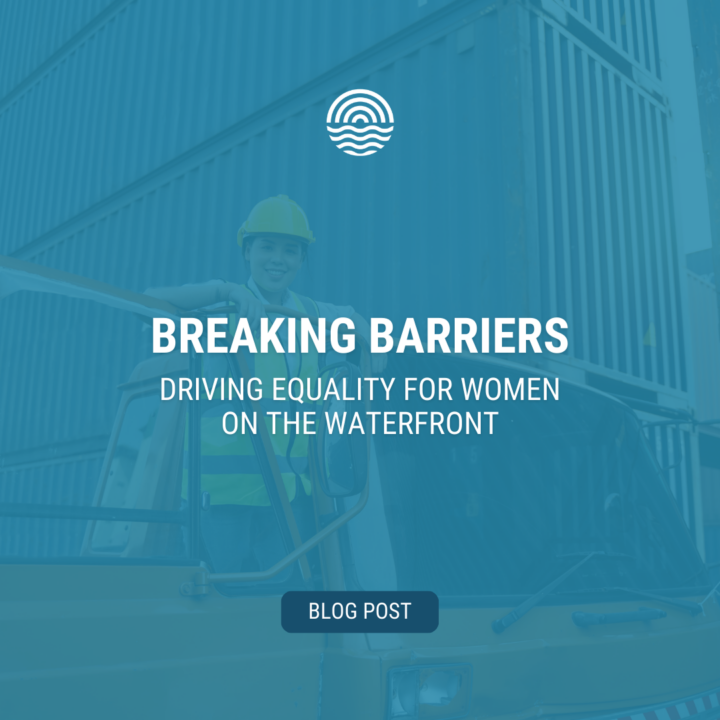
BLOG POST
Breaking Barriers: Driving Equality for Women on the Waterfront
As we celebrate International Women’s Day and Women’s History Month, we reflect on how far we’ve come in empowering women in the maritime and waterfront industry.
However, we also recognize that there is still work to be done to ensure women’s representation, equal opportunities, and pay continue to progress, particularly in a traditionally male-dominated field.
Progress isn’t always linear. However, now more than ever, it’s vital that we continue to advocate for equality, push for change, and ensure that women’s rights and opportunities are always advancing.
In this blog, we’ll explore four key areas where you can drive meaningful change in your workplaces, and share actionable steps to guide you in making progress toward a more inclusive and equal workplace.
1. Close the Gender Pay Gap
The gender pay gap refers to the difference in earnings between women and men. This pay gap is influenced by factors such as job types, industry dynamics, biases in career growth, and salary negotiations.
Last year, women in BC earned 15% less than men. The pay gap also disproportionately impacts women and gender-diverse people who are Indigenous, racialized, newcomers, disabled and/or 2SLGBTQIA+.
Closing the gender pay gap isn’t just a fairness issue; it’s essential for attracting and retaining talent in the industry, empowering women, and fostering equality both within our organizations and in the broader waterfront community.
What you can do:
- Conduct pay audits: Regular pay reviews are crucial to identify and address any discrepancies. Transparency in pay practices levels the playing field for all employees.
- Focus on measurable performance: Ensure that raises and promotions are based on clear, objective criteria and employee contributions rather than gender. Providing transparency around advancement criteria also helps remove bias.
- Promote pay transparency: Openly publish salary ranges, regularly review compensation practices, and encourage open discussions about pay. This can help ensure that compensation is equitable in your workplace and that employees feel confident in the fairness of the process.
2. Create Inclusive Hiring Practices
Inclusive hiring practices are essential in ensuring that candidates from all backgrounds – whether gender, race, ability, or experience – are equally considered for opportunities.
These practices are particularly impactful in attracting and empowering women, especially in the maritime sector where diversity has historically been limited.
What you can do:
- Implement blind recruitment: Removing identifying details (such as names and gender) from resumes during the initial stages can help reduce unconscious bias.
- Promote flexible work options: Offering flexible hours or remote work opportunities can support women balancing caregiving responsibilities, which is especially relevant in the maritime industry’s demanding schedules.
- Diversify the hiring panel: Ensure your hiring team includes diverse perspectives, which helps mitigate bias and fosters better decision-making.
3. Empower Women for Leadership Roles
Although we’ve made progress, women remain underrepresented in leadership roles within the waterfront industry. For true industry transformation, we must continue to break down barriers and create pathways for women to rise into leadership positions.
What you can do:
- Mentorship programs: Establish mentorship initiatives where women in your organization are paired with experienced leaders to provide guidance, support, and career development.
- Leadership development: Create tailored programs focused on building leadership skills and confidence to help women take on more responsibility and navigate potential obstacles in their career advancement.
- Encourage networking: Encourage women to expand their professional networks within and outside the industry. Strong networks can help open doors and create opportunities for advancement!
4. Address Bias
Bias exists everywhere, including the waterfront industry. It’s crucial to actively address these biases to create a truly inclusive and supportive environment for women.
What you can do:
- Offer bias training: Equip your team with tools to identify and address unconscious biases, ensuring fair evaluations and equal opportunities for women in your organization.
- Promote diverse decision-making: Encourage decision-makers to consider the impact on women when making hiring, promotion, and day-to-day decisions within the workplace.
- Foster open dialogue: Create a culture where employees feel safe speaking up about bias, and ensure that these conversations lead to meaningful actions. Leadership should model openness and actively engage in self-reflection.
Supporting Women on the Waterfront
Advancing DEI and supporting women in the waterfront industry isn’t a one-time effort – it’s a continuous commitment. By focusing on closing the gender pay gap, creating inclusive hiring practices, empowering women for leadership roles, and addressing bias, we can take significant steps toward more equitable workplaces.
Together, we can drive lasting change and empower women to thrive on the waterfront!
Ready to make your workplace more inclusive for all?
We’re here to help! Get in touch to learn more about implementing DEI initiatives that will drive meaningful change within your organization and across the waterfront.


